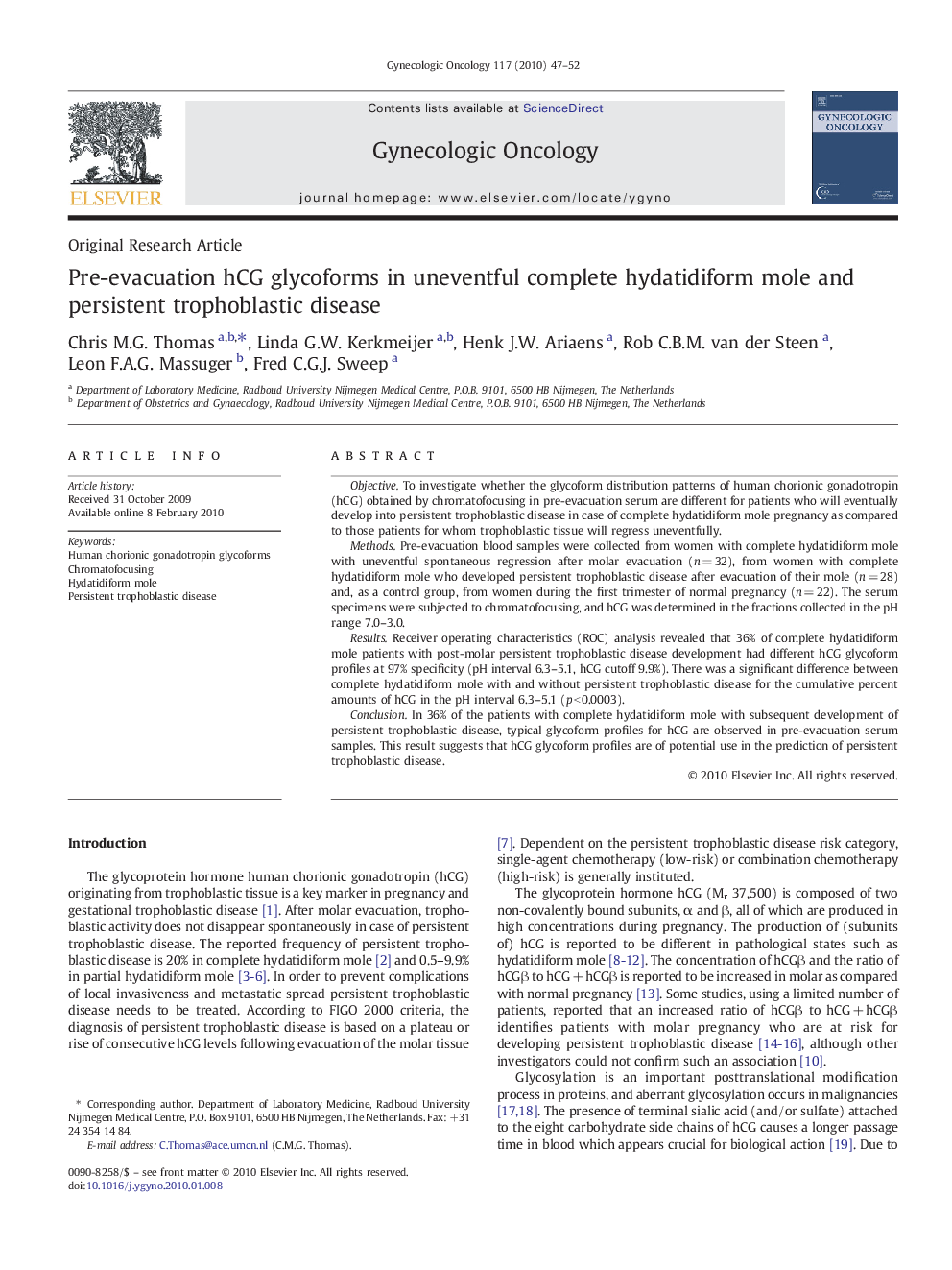| Article ID | Journal | Published Year | Pages | File Type |
|---|---|---|---|---|
| 3944125 | Gynecologic Oncology | 2010 | 6 Pages |
ObjectiveTo investigate whether the glycoform distribution patterns of human chorionic gonadotropin (hCG) obtained by chromatofocusing in pre-evacuation serum are different for patients who will eventually develop into persistent trophoblastic disease in case of complete hydatidiform mole pregnancy as compared to those patients for whom trophoblastic tissue will regress uneventfully.MethodsPre-evacuation blood samples were collected from women with complete hydatidiform mole with uneventful spontaneous regression after molar evacuation (n = 32), from women with complete hydatidiform mole who developed persistent trophoblastic disease after evacuation of their mole (n = 28) and, as a control group, from women during the first trimester of normal pregnancy (n = 22). The serum specimens were subjected to chromatofocusing, and hCG was determined in the fractions collected in the pH range 7.0–3.0.ResultsReceiver operating characteristics (ROC) analysis revealed that 36% of complete hydatidiform mole patients with post-molar persistent trophoblastic disease development had different hCG glycoform profiles at 97% specificity (pH interval 6.3–5.1, hCG cutoff 9.9%). There was a significant difference between complete hydatidiform mole with and without persistent trophoblastic disease for the cumulative percent amounts of hCG in the pH interval 6.3–5.1 (p < 0.0003).ConclusionIn 36% of the patients with complete hydatidiform mole with subsequent development of persistent trophoblastic disease, typical glycoform profiles for hCG are observed in pre-evacuation serum samples. This result suggests that hCG glycoform profiles are of potential use in the prediction of persistent trophoblastic disease.
